Blueprint 2020 Summary Interim Progress Report
[ PDF version ]
Table of Contents
- Engaging in Blueprint 2020—A Vision for Canada’s Federal Public Service
- Overview
- Who We Are
- What We Heard about the Vision
- What We Heard about Achieving the Vision
- Mobilizing for Action
- Want to Hear More? Read on!
Engaging in Blueprint 2020—A Vision for Canada’s Federal Public Service
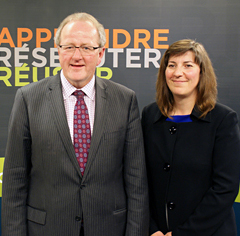
The world in which the Public Service operates is continually evolving and the pace of change facing our organization as well as Canadians is accelerating. With this in mind, on June 7, 2013, we launched Blueprint 2020, a dialogue about the future of the Public Service with the goal of ensuring that it remains a worldclass institution. Since then, an unprecedented number of public servants – in all regions and at all levels across Canada – have eagerly contributed to the discussion.
Blueprint 2020 is engaging public servants in an unprecedented variety of ways, from social media to more traditional town hall-style gatherings. We are seeing groups of employees self-organize to crowdsource solutions using new tools. On the Web, the Blueprint 2020 vision document has been consulted over 125,000 times. The dialogue resulted in more than 13,000 tweets from June to November using the #GC2020 hashtag. Blueprint 2020 continues to be about public servants taking ownership of the process.
What We’ve Heard: Blueprint 2020 Summary Interim Progress Report takes stock of the dialogue to date, identifies emerging themes and highlights exciting ideas to help define our shared future. What we’ve heard so far shows that public servants are immensely proud of the role they play in improving the lives of Canadians, and care passionately about Canada and shaping an organization that is equipped to serve Canadians, now and into the future.
Building the Public Service of tomorrow requires renewal and culture change and so must take place from the ground up by empowering our employees. This is a two-way dialogue, not a topdown exercise as our current challenges are best met by a networking leadership style, reflecting the Blueprint 2020 vision. It’s important that public servants know that they can contribute to their workplace, which is critical to continuing to attract and retain talented people across the myriad of disciplines of the Public Service.
Some of the ideas generated can be implemented over the short term while others will take more time as we consider how best to serve Canadians in a responsive, effective and efficient manner. Each one of us has a part to play, from adopting practical changes in the workplace to contributing to larger-scale initiatives that can make a difference for the Public Service as a whole.
The Blueprint 2020 process has the Prime Minister’s support. Over the coming months, we will continue to facilitate discussions, set priorities and take action. You also have our commitment to remain engaged in the Blueprint 2020 dialogue, to be open to what we are hearing and to strive towards the continuous improvement of our remarkable institution.
What We’ve Heard gives a flavour of the dynamic dialogue and the impressive ideas being discussed. But don’t take our word for it, see for yourself on GCconnex, GCPedia and Twitter! Better still, we urge you to get involved in the conversation! Take up the challenge—do what you can in your workplace to help make the vision a reality. Changes, both big and small, can have a real impact.
Wayne Wouters
Clerk of the Privy Council and Head of the Public Service
Louise Levonian
Chair, Board of Management and Public Service Renewal Sub-Committee on Public Service Engagement
Overview
Who We Are Canada’s federal public servants make a difference in the lives of Canadians every day. Public servants at all levels and from all regions have renewed this commitment this year by providing tremendous input into how this diverse and vibrant national and international team can innovate and work together for Canada’s future.
Our world is changing and with it, the complexity of our work is increasing. All successful organizations need to reflect regularly on how they do business and how to keep pace with the times. With that in mind, we launched an engagement process six months ago on a vision for a world-class Public Service equipped to serve Canada and Canadians now and into the future.
What We’ve Heard: Blueprint 2020 Summary Interim Progress Report highlights the feedback received from June to October 2013 on the Blueprint 2020 vision for Canada’s Federal Public Service. The Clerk of the Privy Council launched the engagement exercise in an unprecedented, Canada-wide webcast inviting all federal public servants to have their say. The exercise was planned across four streams: within departments and agencies, horizontal across communities and the Public Service, targeted external engagement, and engagement on the Web with internal and external social media. Opening up such a wide-ranging engagement of employees on a vision for their future meant taking a chance, and there was no way to know what the response would be.
85 departments and agencies + 30 networks, communities and functional groups.
The risk was well worth it – wow!
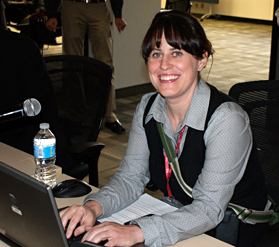
Josée Morais at webcast
Armchair Discussion.
The response of employees and others to this dialogue has far exceeded all expectations. An impressive range of engagement activities that speaks to the ingenuity and creativity of public servants all across the country gave an opportunity for everyone to have a voice in shaping the future of the Public Service (see “Engagement in Action”). From three consultation questions, the discussion rapidly blossomed into dozens of discussion threads, and employees gathered in hundreds of events across the country to provide their ideas and perspectives. In addition to a thriving online dialogue using both internal and external social media tools, departments, agencies, communities and individuals have now submitted reports on how they have come together and what ideas they have to offer to make the vision a reality, many of which have already been or will be acted upon quickly.
- 3,000+ members on GCconnex – the largest group ever!
- 120+ discussion threads on GConnex
- 125,000+ views of the Blueprint 2020 vision on the Clerk’s webpage
What We’ve Heard is a reflection of the commitment to transparency made in the beginning—a defining characteristic of the Blueprint 2020 engagement exercise.
What We Heard About the Vision Input received has focused on what organizations and communities have done to engage employees, what has been heard through the engagement process, what key areas of focus and innovative ideas are emerging, and what early successes organizations have made in implementing changes.
Employees have shown broad support for the vision. At the same time, we have heard some concerns as to whether this will lead to actual changes going forward.
Employees have shown broad support for the vision.
What We Heard About Achieving the Vision Recurring suggestions from public servants indicate that to achieve the four pillars of the vision, we need to place a particular focus on:
- innovative practices and networking,
- processes and empowerment,
- technology,
- people management, and
- the fundamentals of public service.
Each is needed and links into all the pillars of the vision. The fundamentals of public service underpin all of them – focusing on the essential role of public servants in advising Ministers, implementing decisions of government and Parliament, and providing services to Canadians in a way that is accountable and provides value for money.
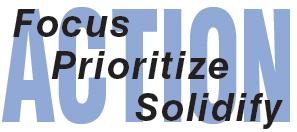
Mobilizing for Action What We’ve Heard marks an important milestone in the Blueprint 2020 journey, and there is more to come. Engagement on the vision will continue. There is still a lot to think about and discuss as we translate ideas into actions for the near and long term. Some ideas can be acted on immediately by individuals and organizations (see “Examples: Early Wins”). Others will take longer and will involve more players. Over the coming months, discussions should focus on prioritizing and solidifying these actions to realize the vision. We all need to deepen our understanding of issues and think about a number of factors. Which ideas are most relevant and have wide support to address the changes needed to realize the vision? How feasible are ideas and who is best placed to make the changes? What can individuals do, what can organizations do, and what can we do as a Public Service to realize the Blueprint 2020 vision?
Departments, agencies and communities will be asked to report again in February 2014 to recommend steps to be included in a Blueprint for Action in the spring that will help us start on the next phase of Blueprint 2020.
The journey is as important as the destination.
Who We Are
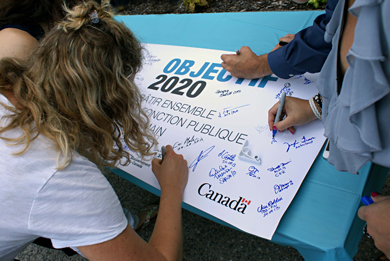
Federal public servants make a difference in the lives of Canadians every day. Together, we are a diverse and vibrant national and international team. Here are some examples of the work we do:
- We deliver important services to Canadians across the country—from providing old age security and employment insurance benefits and passports, to protecting Canada’s sovereignty and providing humanitarian assistance to countries in need, to helping Canadian families save for higher education.
- We enforce rules that keep Canadians safe and healthy, including food and drug safety regulations, and laws to protect the environment.
- We protect Canadians from possible threats at home and abroad. Every day thousands of Canadian public servants combat crime, fight terrorism, secure our borders and rescue Canadians in trouble on land or at sea.
- We help the Government manage Canada’s relations with the world and promote the country’s national interests around the globe.
- We develop policies with and for Canadians, including on the economy, trade, energy and innovation.
- We undertake and support research and development to help scientists and entrepreneurs push the boundaries of science and improve the lives of Canadians.
We do all this and much more, in keeping with the direction of the government of the day, and in close consultation with other levels of government, the public and private sectors, as well as individual Canadians.
We are people serving people—reflecting the diversity of Canadian society and drawing on a vast array of skills and expertise to meet the needs of Canadians and respond to the priorities of the Government.
The fundamentals of our system of responsible government shape how the Public Service functions in Canada’s democratic system. We are professional and non-partisan. We work in the public interest. We ensure sound stewardship. We deliver results.
- Respect for Democracy
- Respect for People
- Integrity
- Stewardship
- Excellence
What We Heard about the Vision
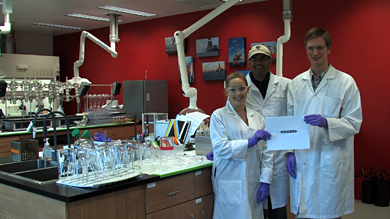
Brianna Vaughn, Gary Wohlgeschaffen and Peter Tharner,
Bedford Institute of Oceanography,
Fisheries and Oceans Canada,
Dartmouth (Nova Scotia).
Public servants are passionate about their country and proud to serve Canadians. They want to affirm their strong commitment to public service. They also want to see concrete action taken as a result of the engagement process.
Employees have shown broad support for the vision. They value the idea of a professional, nimble and tech-enabled Public Service that provides services to Canadians in efficient and effective ways. They want an open and inclusive workplace that helps them make a difference in the lives of Canadians every day. Comments focus on the skills, processes and tools needed by employees to make the vision a reality. People both outside and inside the Public Service also mention the importance of being an employer of choice, and continuing to retain employees and attract recruits to help tackle the challenges of tomorrow.
At the same time, some skepticism was expressed about the implementation of the vision. Employees want to understand how this process is linked to changes already underway to respond to government priorities, particularly in terms of deficit reduction. They also see a need to improve public perceptions of the Public Service.
Employees want to make a difference now more than ever, and that’s why they are responding in such great numbers to the Blueprint 2020 engagement process. Participants in the exercise believe that the vision provides a solid road map to guide the ongoing evolution of Canada’s Public Service.
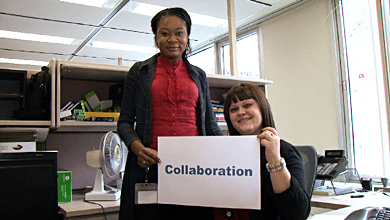
Engaging at Shared Services Canada.
“Agency staff recognize that increased globalization, technological change, changing demographics and growing demand for accountability are putting pressure on how the Public Service operates. … In this way, the Agency agrees that the proposed vision broadly reflects the direction required in order to position the Public Service for the future. Nevertheless, ACOA employees feel that more concrete steps need to be articulated to drive the vision, given each department’s organizational and operational context.
”
– Atlantic Canada Opportunities
Agency Interim Report
A Vision for Canada’s Federal Public Service: A world-class Public Service equipped to serve Canada and Canadians now and into the future.
What We Heard about Achieving the Vision
The quality and quantity of ideas generated through the Blueprint 2020 dialogue are impressive. While many organizations and communities are unique, they also share challenges and see many of the same opportunities for improvement. Some of these are internal in nature, such as people management and technology issues, while others face outward, such as improved client service and Public Service image.
Perspectives reflect the diverse backgrounds, organizations and locations of the federal Public Service. For example, feedback from the Community of Federal Regulators highlights areas of action of particular interest to the regulatory field and views shared at Public Safety Canada highlight the Public Service’s challenge to remain relevant in an information age that is rapidly evolving. In turn, reports received from federal regional councils highlight the tailoring required to best serve Canadians’ needs in each region of the country.
The input received to date suggests there are strong inter-linkages between key areas of action required to achieve the vision. Employees draw linkages between engagement and innovative ideas, between internal collaboration and technology to help in this regard, as well as between a healthy workplace and high performance. Many point to the culture change needed for a more open and networked environment and a whole-of-government approach that can draw on the benefits of new technologies and new ways of working among ourselves and with others.
Many also recognize the need for balance. For instance, many see new technologies as useful, yet think we must be clear about their purpose and retain some face-to-face services and opportunities to connect with Canadians. One size does not fit all —the Public Service needs a mix of generalists and specialists, common processes and systems that work together. At the same time, it must have the flexibility to address issues that emerge from different sectors of interest and regional perspectives across the country.
Guiding Principles of the Blueprint 2020 Vision
The Blueprint 2020 vision is one of a world-class Public Service equipped to serve Canada and Canadians now and into the future. Public servants have shown strong support for the vision’s four guiding principles:
- An open and networked environment that engages citizens and partners for the public good.
together with… - A whole-of-government approach that enhances service delivery and value for money.
enabled by… - A modern workplace that makes smart use of new technologies to improve networking, access to data and customer service.
and… - A capable, confident and high-performing workforce that embraces new ways of working and mobilizing the diversity of talent to serve the country’s evolving needs.
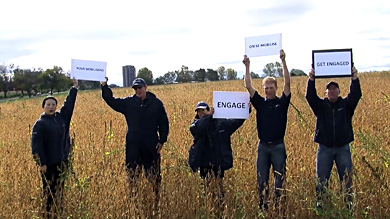
Public servants from the Canadian Food Inspection Agency
encouraging their colleagues to get engaged in Blueprint 2020.
Five areas of focus to support the vision’s guiding principles
Thousands of ideas have been offered to help ensure the four guiding principles of the vision are well supported. Discussion has overwhelmingly indicated that five areas will require particular attention in order to achieve the vision.
These five areas of focus have linkages to all pillars of the vision. For example, people management, which consistently comes across as a top issue of concern, will support a capable and high-performing workforce that has the skills needed to engage citizens and partners for the public good. Technology will help support a networked environment allowing whole-of-government solutions. The fifth area, “Fundamentals of Public Service”, underpins all of the other topics and focuses on the essential role of public servants in advising Ministers, implementing decisions of government and Parliament, and providing services to Canadians in a way that is accountable and provides value for money.
While requirements may be framed or pursued in various ways within organizations and communities, the following summarizes the five priority areas that are raised consistently in the input received to date (see examples).
1. Innovative practices and networking
Public servants want to develop innovative ideas and approaches to better serve Canada and Canadians. This requires improved information sharing and more ways to connect and collaborate across the Public Service to learn from each other and draw on outside expertise as needed. Many would like to see greater use of communities of practice, enhanced public access to information and more emphasis on engaging external partners and the Canadian public. They also see a need for more risk tolerance to try out new ways of working and serving Canadians.
2. Processes and empowerment
Public servants are focused on results, and many suggest that we could make better use of time and resources by reducing internal red tape as well as by streamlining approvals, planning and reporting, and administrative functions. Employees are looking for greater empowerment at the individual level and reduced hierarchy. They also think that there should be more consideration of regional perspectives and operational differences.
3. Technology
To work better together, public servants are looking for a toolset the whole Public Service can use, and support for smart use of technologies such as social media. They are also looking for online tools that help improve services to Canadians. Technology is seen as critical to help communication, collaboration, information sharing and service delivery.
4. People management
To remain a capable, confident and high-performing workforce, public servants want ways to build competencies and develop skills for the future to help enhance networking, collaborative policy design and the use of social media. They want a diverse range of learning opportunities and creative job and organizational designs. They suggest that new strategies are needed for managing and recognizing performance. They also point to the need for improved recruitment and staffing processes to respond more quickly to changing priorities. Employees are also looking for more flexible work options and healthy workplace initiatives to help foster an agile and high-performing workforce.
5. Fundamentals of public service
Working for the country is more than just doing a job, and some discussions have focused on what makes being a public servant a particular calling. Discussions have pointed to a need to bolster our strong commitment to diversity, official languages and public service values and ethics. Public servants also value non-partisanship in support of democracy, and understand the importance of effective relationships with elected officials to help support government direction and priorities. They express a strong desire for a renewed public image that recognizes the Public Service’s dedication to serving Canadians, and inspires and reinvigorates people on its important role, helping in turn to continue to retain and attract the talent the Public Service needs to achieve excellence.
Taking Early Action
Natural Resources Canada’s Blueprint 2020 Tiger Teams are exploring how government can more actively use task teams and innovation labs for problem-solving.
Public Works and Government Services Canada‘s Atlantic Region revised its governance structure to include committees comprising employees from all levels of the organization. The intent is to increase employee engagement and help establish a more integrated and corporate regional management structure.
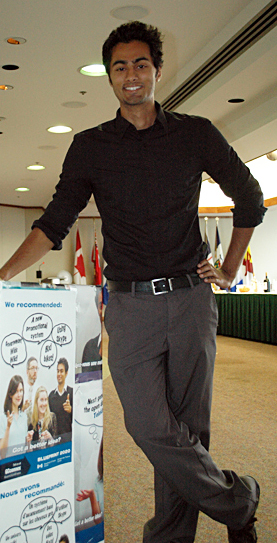
Gorav Chaudhry, Finance Canada.
Got an idea for Public Service renewal?
As a result of ongoing employee engagement, Employment and Social Development Canada (ESDC) is now mapping all Service Canada Centres correctly in Google maps, so citizens are able to find the Service Canada Centre nearest to them. ESDC has also made recent changes to how Ontario Service Canada Centres triage Canada Pension Plan and Old Age Security incoming documents to be more efficient.
Employees at Veterans Affairs Canada (VAC) made it clear that one of the most basic tools for collaboration is access to Web 2.0 tools like social media. As a result, VAC has decided to fully roll out additional social media tools, including Twitter, Facebook and YouTube. Maximizing their use will help VAC to respond and adapt quickly to Canada’s Veterans changing needs for information, services and benefits.
Health Canada launched an initiative to provide tablet devices to a pilot group of compliance and enforcement inspectors in the field. It has also begun working on a new Leadership Development Road Map which will help managers match learning opportunities with needed skills and competencies.
The Canada School of Public Service is offering more modular courses for learners and expanding the use of technology to modernize the learning experience; every hour, over 100 public servants launch an online learning activity at the School.
Thanks to comments received during a face-to-face engagement session, the Canada Border Services Agency and the Royal Canadian Mounted Police in Bathurst are now exploring options to jointly respond to marine risks on the Acadian Shore.
Mobilizing for Action
Everyone has a part to play, from adopting practical changes in the workplace to contributing to larger-scale initiatives that can make a difference for the Public Service as a whole.
As public servants, we each need to ask ourselves what we are doing to keep our own skills current and our thinking fresh. Individually and collectively, we must be engaged and equipped to improve our day-to-day practices. The Blueprint 2020 dialogue gives us all a voice in shaping a stronger and high-performing Public Service in the future. Many ideas can be addressed by individuals (e.g., sharing best practices) and by departments and agencies (e.g., fewer layers of approvals) and can be acted on immediately. Others will take longer, involve more players and need horizontal cooperation (e.g., building common IT toolsets).
“Participants feel strongly that everyone at every level has a personal responsibility to ensure that the Public Service continues to strive for excellence.
”
– Canadian International
Trade Tribunal Interim Report?
“What makes an initiative grass roots is not who initiated it but who is running with it.
”
– @PascaleElvas, Twitter
In the next phase of engagement, discussions should focus on prioritizing and solidifying actions. The next round of input will be used to guide and create the Blueprint for Action to be released in spring 2014, as well as inform the specific actions departments and agencies will take in their own plans to support the Blueprint 2020 vision.
As we talk about what actions to include in the Blueprint for Action, we all need to deepen our understanding of issues and think about a number of factors.
- Which ideas are most relevant and have wide support to address the changes needed to realize the vision?
- How feasible are ideas and who is best placed to make the changes?
- What can individuals do, what can organizations do, and what can we do as a Public Service to realize the Blueprint 2020 vision?
Deputy heads and engagement Champions can’t do this alone. It’s up to each of us to make a difference, and a challenge for all of us to think about what we can do as individuals.
“This vision is about change. Change is our constant. … If we are to support this vision, then each of us needs to find our role in that vision.
”
– Canadian Heritage
Interim Report
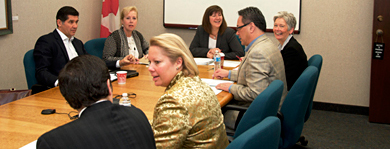
The Board of Management Sub-Committee on
Public Service Engagement.
Keep on Engaging!
Watch for ongoing opportunities to participate, both online and in-person, and keep making your own! Over the next few months:
- Input will continue to be gathered in departments and agencies, in communities and through social media.
- Input from external parties will also continue to be welcome through the Clerk’s website.
- Departments, agencies, networks and functional communities will be asked to submit final progress reports in February highlighting the actions they are taking and others they anticipate in order to respond to the many ideas submitted, as well as the areas that warrant horizontal action to realize the vision.
- The Board of Management and Public Service Renewal, a Deputy level committee chaired by the Clerk of the Privy Council, will define key Public Service-wide areas of action based on the feedback received and building on the range of initiatives already underway as well as the actions taken in each organization.
Building the Public Service of tomorrow requires renewal and culture change and so must take place from the ground up by empowering our employees. This requires leaders who embrace a networking style in line with the Blueprint 2020 vision. Transformational change takes time. Some ideas can be taken up over the short term. Some actions will require broader coordination or require further approvals, and some will take longer to implement as we consider how best to serve Canadians in a responsive, effective and efficient manner. This has to be an ongoing process.
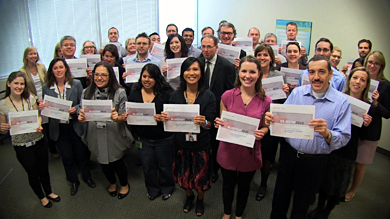
Treasury Board Secretariat employees take part in a
Blueprint 2020 event.
Once we have a Blueprint for Action, we will need to follow up on the measures we set out. We will have to ensure progress and continue to adjust our approach moving toward 2020. Public servants have expressed a widespread desire to see this type of dialogue continue on an ongoing basis. Your ongoing input and suggestions will help us position ourselves to better serve Canada and Canadians in the years ahead.
We have embarked on an exciting journey. Engagement is becoming business as usual. It is important that we keep the dialogue going about the Public Service of the future so that our proud tradition of excellence continues.
Each of us has a role to play in changing the culture. Get engaged!